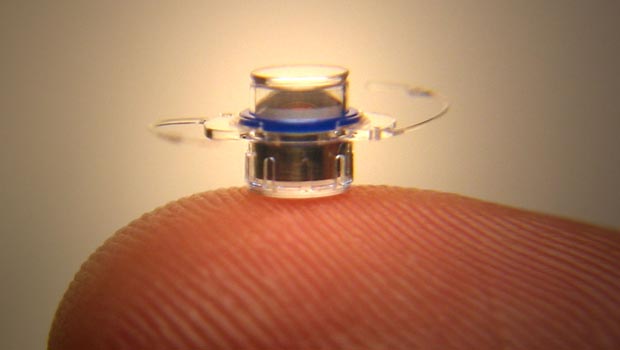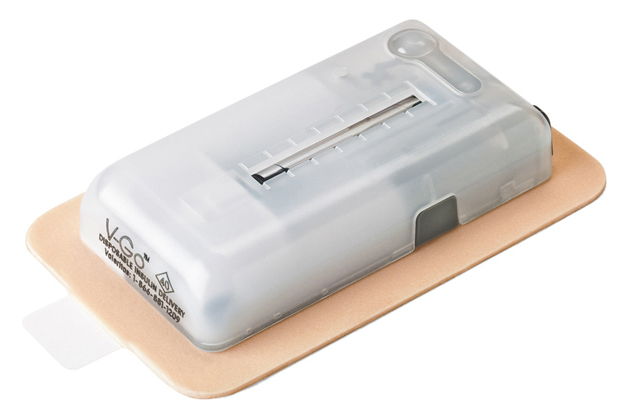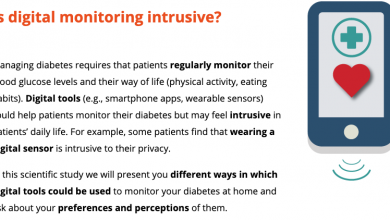A New Hope to Restore Eyesight

People with diabetes are at a greater risk for vision loss, primarily due to diabetic retinopathy, a condition that arises from chronic damage to vessels carrying blood to the retina.
People with diabetes may also develop other unrelated eye disorders, including macular degeneration, which is the progressive erosion of the tissue at the center of the retina. The principal causes of macular degeneration are accumulation of cellular debris, (“dry” form) or abnormal growth of blood vessels (“wet form”) behind the retina; both lead to detachment of the retina from the optic nerve junction. Although laser surgeries and certain medications can alleviate the wet form of the disorder, there are no current remedies for patients suffering from either form of end-stage age-related macular degeneration (“AMD”).
That may soon change. In 2010, VisionCare Ophthalmic Technologies introduced in the United States an eye-implantable miniature telescope, called the Lipshitz Macular Implant (LMI). The device, created by Dr. Isaac Lipshitz, CEO of OptoLight Vision Technology in Israel, restores vision lost through end-stage age-related macular degeneration. The U.S. Food and Drug Administration (FDA) recently revised its criteria regarding which patients can use this treatment, lowering the minimum age requirement from 75 to 65.
To go along with this new eye surgery, VisionCare has developed a network of specially-trained ophthalmic surgeons and clinicians to perform the implant procedure and clinicians to provide preoperative and postoperative care. With this comprehensive approach, prospective recipients undergo rigorous medical and vision evaluation by specialists who treat eye disorders and screening for general surgical risk and post-surgical complications.
In OptoLight’s patient information materials, Dr. Lipshitz, an international pioneer in the field of visual prosthetics, describes his invention as surgeon-friendly and the procedure as minimally invasive. (Attempts to contact VisionCare representatives for comment on this story were unsuccessful.) The implant can be completed in the surgeon’s office or an ambulatory clinic in approximately an hour. The device, the procedure, and associated clinical expenses qualify for Medicare reimbursement.
Currently, the FDA has not approved this treatment for people with diabetes. The reasoning is that patients with diabetes are at heightened risk of general surgical and post-surgical complications. Additionally, although the implantable device is smaller than a dried pea, the FDA considers it a “big” procedure because it removes a substantial part of a layer of cells in the cornea that are important for maintaining clarity in vision.
That being said, the widening popularity and accessibility of such a procedure might be good news for people with diabetes, even if it’s not a procedure from which they can currently benefit.
First, it proves that medical implants and nanotechnologies present the very real possibility that advances in diagnosis and treatment of diabetic disorders can be achieved swiftly. “Smart” meters capable of storing months of data, tracking healthy and unhealthy swings in blood glucose, and transmitting warnings to patients and clinicians have rendered paleolithic the meters in use a decade ago. The same holds true for insulin pumps and other delivery systems which reduce or eliminate potential for patient error in dosing.
Second, VisionCare’s unique and comprehensive clinical approach represents a vanguard method for early capture of suitable patients, cultivating professional competence, carefully coordinating treatment and follow-up, evaluating long-term success and identifying improvement opportunities. It’s a model that, if replicated, could lead to an improved continuum of care for other medical procedures to treat chronic conditions.
Third, a survey of current clinical publications reveals that there are no fewer than 12 visual prostheses development projects underway involving nanotechnology to improve imagery or nerve function, some of which could be suitable for use for people with diabetes.
No one wants to contemplate eye surgery, but if microscopic technology can restore vision, people will line up to go under the knife.




